Kodak Easyshare V705 Review
Review Date: October 24th 2006
Leave a Comment about this Review
|
Image Quality
All of the sample images in this Review were taken using the 7M quality mode, which gives an average image size of around 1.5Mb - 2Mb.
Noise
There are 6 ISO settings available on the Kodak Easyshare V705 which you can select at any time if the camera is in the Auto shooting mode. Here are some 100% crops which show the noise levels for each ISO setting:
ISO 50 (100% crop) |
ISO 100 (100% crop) |
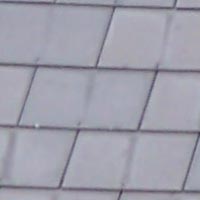 |
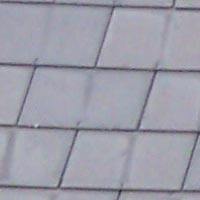 |
ISO 200 (100% crop) |
ISO 400 (100% crop) |
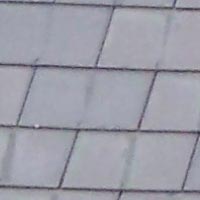 |
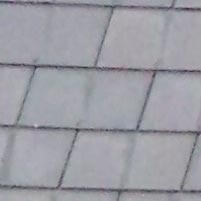 |
ISO 800 (100% crop) |
ISO 1000 (100% crop) |
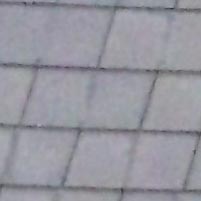 |
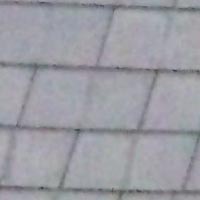 |
There is no discernible noise at the slowest settings of ISO 50 and 100. ISO 200 is beginning to show some noise and an element of blurring to help hide it. At ISO 400 image quality has deterioated quite a lot as more noise creeps in and the camera blurs detail further. ISO 800 and 1000 are so noisy that they should only really be used as a last resort.
Sharpening
Here are two 100% crops which have been Saved as Web - Quality 50 in Photoshop. The right-hand image has had some sharpening applied in Photoshop. The out-of-the camera images are a little soft at the default sharpening setting of Normal and benefit from some further sharpening in a program like Adobe Photoshop. Alternatively you can change the in-camera sharpening level to Sharp, Normal or Soft to suit your taste.
Original
(100% crop) |
Sharpened (100% crop) |
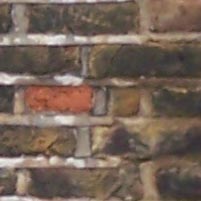 |
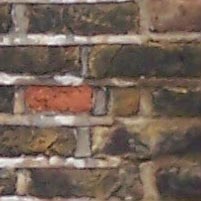 |
 |
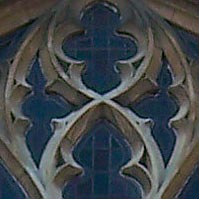 |
Chromatic Aberrations
The Kodak Easyshare V705 dealt well with chromatic aberrations well during the review, with only limited purple fringing present around the edges of objects in certain high-contrast situations, even at the 23mm ultra wide-angle lens setting.
| Example
1 (100% crop) |
Example
2 (100% crop) |
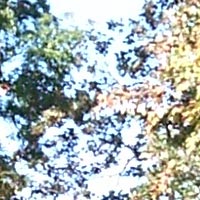 |
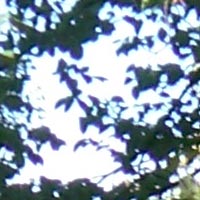 |
Macro
The Kodak Easyshare V705 offers a Macro setting that allows you to focus on a subject that is 5cms away from the camera when the lens is set to 39mm wide-angle (you can't use Macro with the ultra-wide 23mm lens). The first image shows how close you can get to the subject (in this case a compact flash card). The second image is a 100% crop.
| Macro Shot |
Macro Shot (100% crop) |
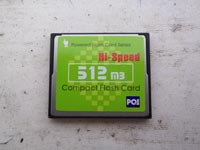 |
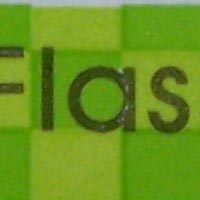 |
Flash
The flash settings on the Kodak Easyshare V705 are Auto, Off, Fill and Digital Red-eye Reduction. These shots of a magnolia coloured wall were taken at a distance of 1.5m.
| Flash Off - Ultra Wide Angle (23mm) |
Auto Flash - Ultra Wide Angle (23mm) |
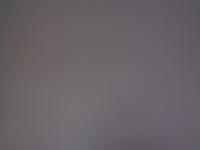 |
 |
| Flash Off - Wide Angle (39mm) |
Auto Flash - Wide Angle (39mm) |
 |
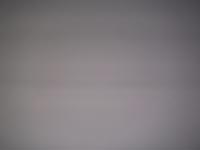 |
| Flash Off - Telephoto (117mm) |
Auto Flash - Telephoto (117mm) |
 |
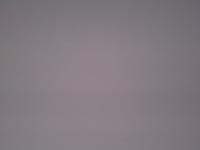 |
And here are some shots of yours truly. As you can see, neither the Auto or the Digital Red-Eye Reduction option caused any red-eye.
| Flash On |
Flash On (100% Crop) |
 |
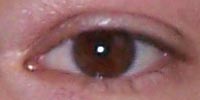 |
| Flash - Red-Eye Reduction |
Flash - Red-Eye Reduction (100% Crop) |
 |
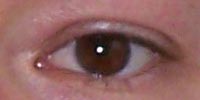 |
Night Shot
The Kodak Easyshare V705 maximum shutter speed is 8 seconds in the Long Exposure mode, which is just about adequate for night photography. The shot below was taken using a shutter speed of 8 seconds at ISO 64. I've included a 100% crop of the image to show what the quality is like. The camera takes the same amount of time again to apply noise reduction, so for example at the 8 second setting the actual exposure takes 16 seconds.
| Night Shot |
Night Shot (100% crop) |
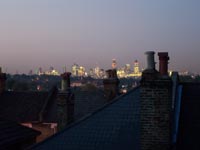 |
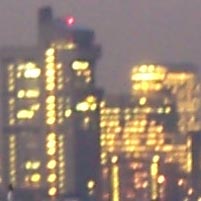 |
Overall Image Quality
The Kodak Easyshare V705 produced images of slightly above average quality during the review period. The 7 megapixel images were quite soft straight out of the camera at the default sharpening setting and ideally require some further sharpening in an application like Adobe Photoshop, or you should change the in-camera setting to High. The Kodak Easyshare V705 dealt well with chromatic aberrations, with limited purple fringing effects appearing only in high contrast situations. Macro performance is average, allowing you to focus as close as 5 cms away from the subject. The built-in flash worked adequately indoors, with little red-eye and slight under-exposure. The night photograph was OK, with the maximum shutter speed of 8 seconds long enough for most situations. The 1/2.5 inch, 7 megapixel sensor used in the Kodak Easyshare V705 produced clean images at the slowest ISO speeds of 50 and 100, but noisier and blurred images at ISO 200 and 400. The new fastest ISO speeds of 800 and 1000 aren't really worth using. With no optical image stabilisation system, this make the V705 something of an outdoors, good-light camera.
|
![]() PhotographyBLOG
is a member of the DIWA
organisation. Our test results for the Kodak Easyshare V705
have been submitted to DIWA
for comparison with test results for different samples of
the same camera model supplied by other DIWA
member sites.
PhotographyBLOG
is a member of the DIWA
organisation. Our test results for the Kodak Easyshare V705
have been submitted to DIWA
for comparison with test results for different samples of
the same camera model supplied by other DIWA
member sites.
